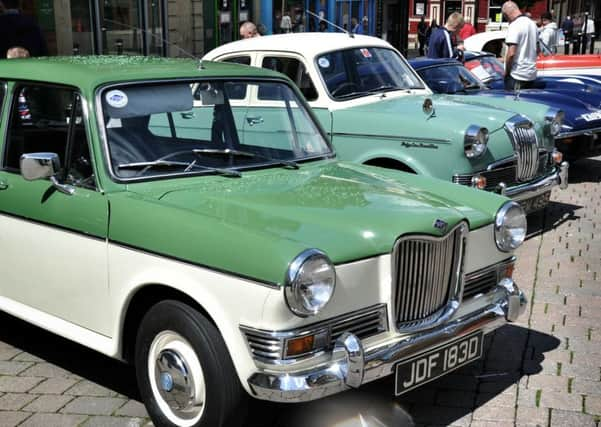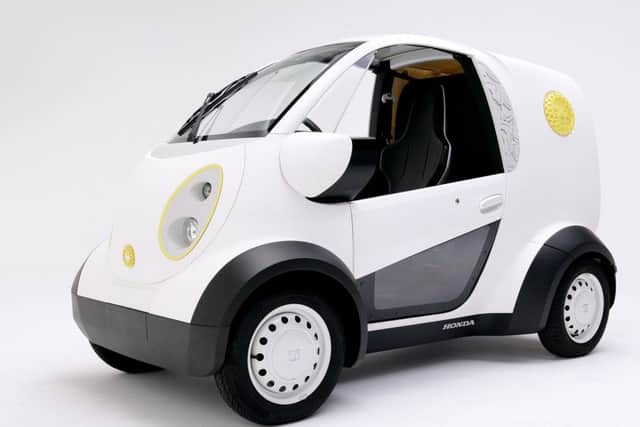Talking Motors: Black and silver plate is not badge of honour


And that’s especially the case when the list includes jobs to do which are largely for the cosmetic benefit of a car.
One such job for me has been to swap my number plates.
My car still has dealer plates on it from the time before last it was sold. I hate the fact it reads ‘Wirral Classic Cars’ under the numbers (no offence to the dealer, I get why they do it) and that it’s got one of those ‘GB’ signs under a European flag to the left hand side. It just looks wrong on a 70s car.


Advertisement
Hide AdAdvertisement
Hide AdA small, and purely cosmetic change, granted, the plates have been a bugbear of mine since I first saw the stand for The Numberplate Centre, a Birmingham-based company that tours the car events, at the Manchester Classic Car show two years ago.
Obviously you need your documents to order a number plate, and each time I’ve been to a show since I’ve forgotten them, and there was no chance of that happening this time as I ensured my V5C was in the handbag of my chaperone. At the stand, there are many different plates to choose from, which might seem strange to someone thinking ‘but they’re just number plates’, but the call requires much more agonising over than that - trust me, I’ve spent nearly three years deciding which ones to go for.
There’s metal reflective plates, where the digits bump out a little, there’s straightforward no-frills plastic ones and the ones I went for, ‘70s raised plastic.’ Think reliant robin van and you’ll know the type I mean.
Reflective number plates, that’s white and the front and yellow at the back, back became compulsory on new vehicles from January 1, 1973, but they were drip fed in a few years before then.


Advertisement
Hide AdAdvertisement
Hide AdSome cars were sporting them as early as the late 60s, with many car owners opting to swap the black and silver plates on their older cars for these trendy new reflective ones.
And how trends change.
Cars over the age of 40 can now be registered as ‘historic’ with the DVLA, meaning owners no longer have to pay road tax (though they still need to ‘tax’ their car at the nil-rate band) and they are legally allowed to wear black and silver number plates.
It baffles me. Go on, call me a purist.
The car of mine the new plates are for is a 1979 model, so this debate doesn’t apply to it for another two-and-a-bit years, so the question is, if I have waited so long to get new plates, why not wait a little longer and get the much-coveted black and silver ones?
Because my car didn’t leave the showroom 37 years ago with them.
Advertisement
Hide AdAdvertisement
Hide AdIf owners want to swap over when their vehicle reaches ‘historic age’, that’s fine, it’s your car and up to you, but when I see a 1975 Morris Marina on black and silver plates it just looks… well, weird.
But preferences come with contradiction, and while I squirm at under-40 cars with black and silver plates (‘MOT failure that, mate’ is my mantra), there are loads of non-original bits on my car which I quite like. It’s funny what winds us up.
Need a communter vehicle? Well just print one
Japanese kei cars.
I’ll admit to not being the world’s biggest fan of the small cubes on wheels. Aside from the Mazda MX-5, the best thing to come out of the country is obviously the Honda 50 (and that’s still a sore point because I want a bike and am not allowed one… even a piddly 50 cc one).
Everything from tiny trucks, commuter cars and even fire engines can be found in Japan, but Honda’s next development is certainly capable of raising eyebrows, even when a Daihatsu Copen, resembling the toy from a Kinder Egg, is on the roads.
Advertisement
Hide AdAdvertisement
Hide AdThe picture you can see is of their short range ‘Micro Commuter’ electric vehicle for use by Japanese confectionary maker, Toshimaya, and it can be 3D-printed. Well, bits of it can.
The car is a joint development with Kabuku Inc., and is based on an open innovation model which incorporates the idea of variable design platform. The car was unveiled at CEATEC Japan 2016.
It uses a chassis constructed from Honda’s rigid but lightweight pipe frame structure, and 3D-printing techniques have been used to create the exterior panels and luggage space. The Micro Commuter is powered by Honda’s Micro EV technology, designed for short-range trips up to approximately 80 km (50 miles) and is used on the MC- β ultra compact EV in Japan.
I can’t see McLaren using it any time soon.